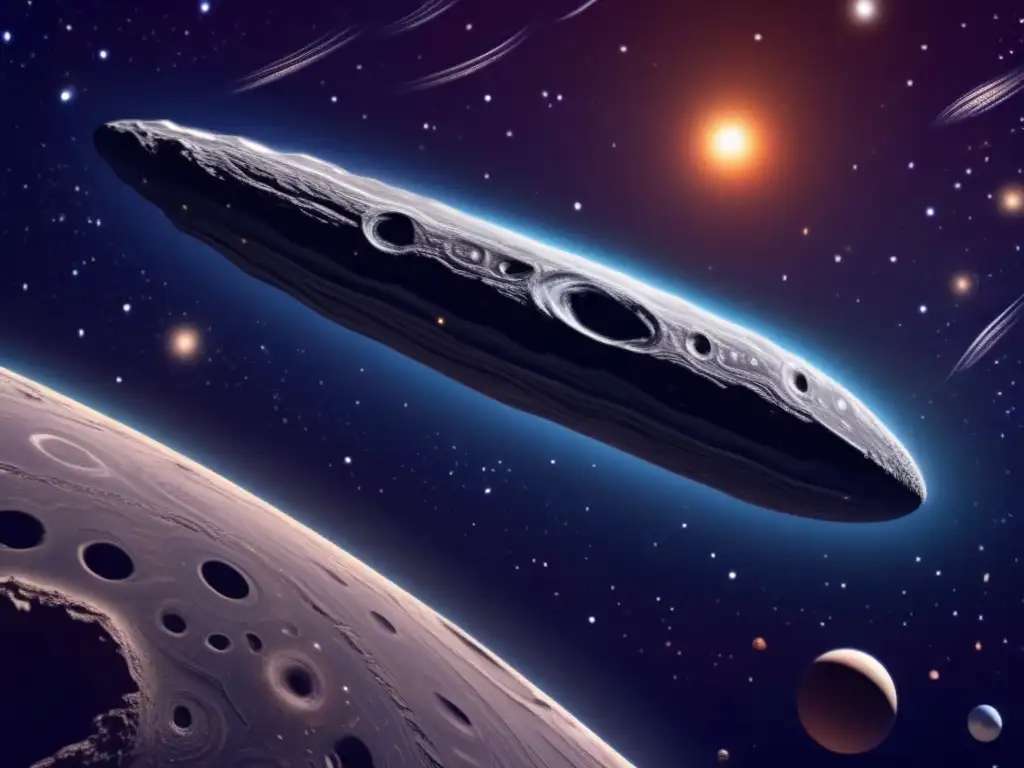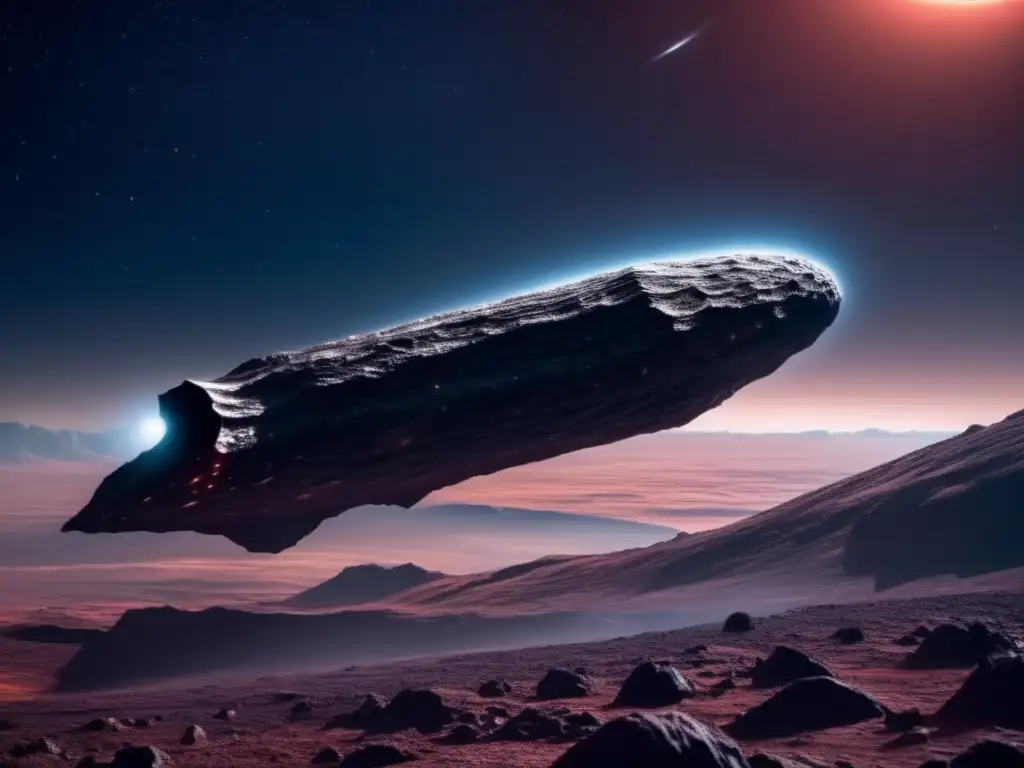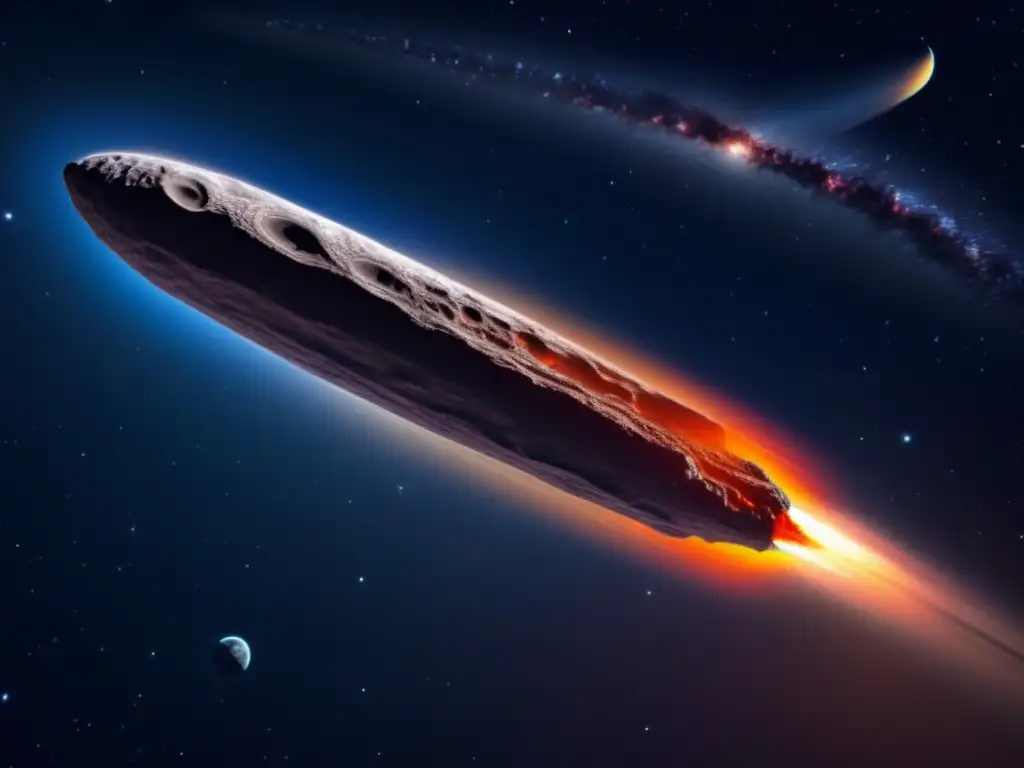The Tale Of 'Oumuamua: An Interstellar Visitor

Introduction
On October 19, 2017, an unusual object was detected by the Pan-STARRS1 telescope in Hawaii. It was unlike any asteroid or comet we had ever seen before. The object was given the name 'Oumuamua, which means "scout" or "messenger" in Hawaiian, because it was the first interstellar visitor ever detected passing through our solar system. This article will explore the fascinating story of 'Oumuamua and what we can learn from its discovery.
'Oumuamua's Journey

Origin and Characteristics
'Oumuamua's origin is still a mystery. It is thought to have originated from another star system, possibly from the direction of Vega or Sirius. Its trajectory showed that it was not bound to the sun and was moving too fast to be captured by its gravity. As it traveled through our solar system, 'Oumuamua's speed peaked at more than 196,000 miles per hour, making it the fastest object ever recorded by humans.
Scientists were amazed by its shape and appearance. 'Oumuamua was long and thin, with a cigar-shaped body that measured approximately 800 by 80 feet. This shape was highly unusual for an asteroid or comet, and scientists were unable to explain how such a shape could form naturally.
Discovery and Observation
After its discovery, astronomers around the world scrambled to observe 'Oumuamua with as many telescopes as possible. However, because of its high speed and small size, 'Oumuamua was difficult to detect, and observations were limited to just a few weeks.
The data collected during the brief observation period revealed some surprising information about 'Oumuamua. For example, its brightness varied significantly over time, suggesting that it had an elongated shape rather than a spherical one.
Controversial Hypotheses
A number of hypotheses have been proposed to explain 'Oumuamua's unusual properties, some of which were highly controversial. One hypothesis suggested that it could be an artificial object created by an extraterrestrial civilization. This theory was quickly dismissed by most scientists, who argued that there was no concrete evidence to support it.
Another popular hypothesis was that 'Oumuamua was a comet rather than an asteroid. However, observations of the object did not detect any gases or dust usually associated with comets.
'Oumuamua's Legacy

Advancements in Astronomy
Despite the mystery surrounding 'Oumuamua, its discovery has led to significant advancements in astronomy and our understanding of the universe. Firstly, it highlighted the possibility of interstellar objects entering our solar system, providing a new area of study for astronomers.
Secondly, it spurred the development of new telescopes, such as the upcoming Vera C. Rubin Observatory, which will enable researchers to detect and study more interstellar objects in the future.
Lessons for Future Discoveries
'Oumuamua's journey through our solar system has taught us several valuable lessons that will help us prepare for future discoveries. Firstly, it has shown us the importance of rapid response systems that allow telescopes to quickly observe unusual objects before they move out of range.
Secondly, it has demonstrated the need for advanced instrumentation and technology to better detect and study interstellar objects. Finally, it highlighted the importance of international collaboration and data sharing to facilitate scientific discoveries.
Frequently Asked Questions

-
What is 'Oumuamua?
'Oumuamua is an interstellar object that was first detected by the Pan-STARRS1 telescope in Hawaii in 2017. It is thought to have originated from another star system and passed through our solar system at a speed of over 196,000 miles per hour.
-
Why was 'Oumuamua so unusual?
'Oumuamua was unusual because of its shape, which was long and thin like a cigar. It also did not exhibit any of the usual characteristics of a comet or asteroid, making its origin and properties difficult to explain.
-
What did we learn from 'Oumuamua's journey?
'Oumuamua's journey taught us the importance of rapid response systems, advanced instrumentation and technology, and international collaboration and data sharing for future astronomical discoveries.
-
What do we know about 'Oumuamua's origin?
'Oumuamua is thought to have originated from another star system, possibly from the direction of Vega or Sirius. Its exact origin remains a mystery.
-
What impact has 'Oumuamua had on astronomy?
'Oumuamua's discovery has led to significant advancements in astronomy and our understanding of the universe. It has highlighted the possibility of interstellar objects entering our solar system, provided a new area of study for astronomers, and spurred the development of new telescopes and technology.
Conclusion
'Oumuamua's journey through our solar system was a remarkable event that captured the attention of scientists and the public alike. While it left us with more questions than answers, it has led to significant advancements in astronomy and our understanding of the universe.
We look forward to the future discoveries that will be made possible by the lessons learned from 'Oumuamua, and we encourage readers to continue to explore the fascinating world of celestial objects.
Additional Resources

- NASA - What is asteroid 'Oumuamua?
- National Geographic - First Contact with Interstellar Space Object Fuels Scientific Debate
- Space.com - Could Interstellar Object 'Oumuamua Be an Alien Probe? Why Some Scientists Are Doubtful
 Astraea: A Breakthrough In Asteroid Discovery
Astraea: A Breakthrough In Asteroid Discovery The Discovery And Exploration Of The Asteroid Itokawa
The Discovery And Exploration Of The Asteroid Itokawa 2014 MU69: Pushing The Boundaries Of Asteroid Exploration
2014 MU69: Pushing The Boundaries Of Asteroid ExplorationIf you want to discover more articles similar to The Tale Of 'Oumuamua: An Interstellar Visitor, you can visit the Asteroid Discoveries category.
Leave a Reply

Articulos relacionados: